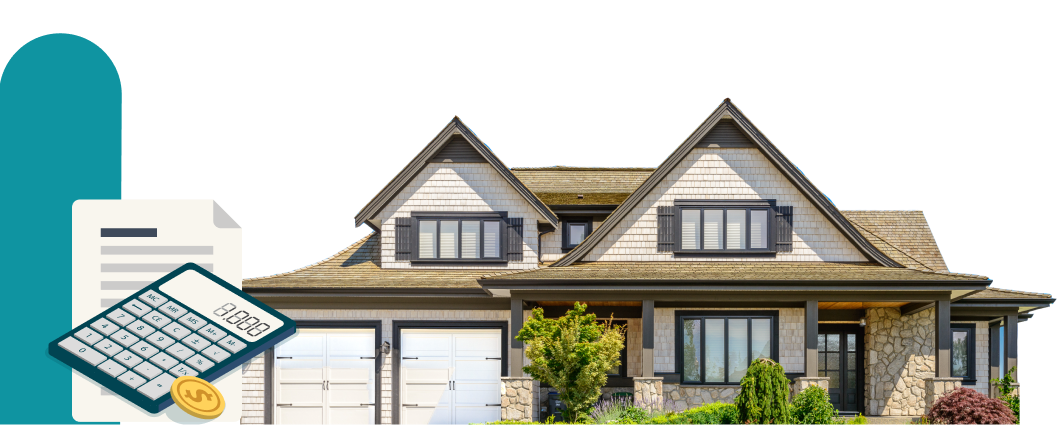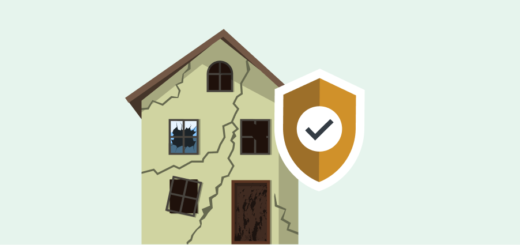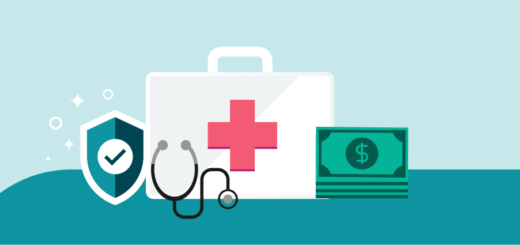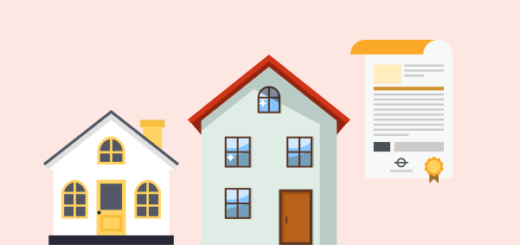How Much Homeowners Insurance Do I Need?
Our goal is to give you the tools and confidence you need to improve your finances. Although we receive compensation from our partner lenders, whom we will always identify, all opinions are our own. Credible Operations, Inc. NMLS # 1681276, is referred to here as “Credible.”
Whether you’re buying a home or performing a routine financial review, you might be wondering how much homeowners insurance you actually need.
Adequate home insurance coverage is an essential step to protecting your home against unforeseen events (perils) and minimizing your out-of-pocket expenses should you need to file a claim.
Here’s what you need to know about homeowners insurance, including the recommended amount of coverage most homeowners should have:
How much homeowners insurance do I need?
You should buy enough coverage to cover the full costs of rebuilding your home and replacing your belongings. In the event of a total loss, being underinsured may force you to draw on your savings or borrow money to cover the remaining costs.
If you’re making a mortgage payment, your lender may also require you to have a minimum amount of home insurance.
When estimating your insurance needs, consider these three levels of protection:
- Actual cash value: An actual cash value policy replaces your home and personal belongings after calculating depreciation.
- Replacement cost coverage: This policy pays the cost to replace or repair your home and personal belongings, up to your policy’s limit. Depreciation isn’t deducted from the cost.
- Guaranteed/extended replacement cost: This policy pays to replace or repair your home and personal belongings even when costs exceed your policy limits. This is the highest level of coverage and generally the most expensive option.
Homeowners insurance coverage
Homeowners insurance policies can cover your property against the following 16 named perils (although not all policies will cover all of these):
- Fire or lightning
- Smoke
- Windstorm or hail
- Weight of ice, snow, or sleet
- Falling objects
- Accidental discharge of water or steam (e.g, plumbing, air conditioning, or appliances)
- Freezing of household systems
- Damage from a power surge
- Accidental bulging, burning, cracking, and tearing
- Explosion
- Theft
- Vandalism
- Riots
- Damage from vehicles
- Damage from aircraft
- Volcanic eruption
Named perils vs. open perils
Your homeowners policy distinguishes covered events in one of two ways:
- Named perils: Named perils coverage only reimburses you for damage or losses from perils specifically listed in your insurance policy. Any event not meeting the defined criteria is not covered.
- Open perils: Open perils coverage reimburses you for damage or losses on all events except those specifically excluded from your policy. Insurance brokers sometimes refer to this type of coverage as “all risks” coverage.
The peril coverage you receive depends on the type of homeowners insurance you have.
For example, basic homeowners insurance (HO-1) may only cover 10 named perils instead of all 16.
Here are the most common types of homeowners insurance forms:
| Policy type | Number of covered perils | Type of peril coverage |
|---|---|---|
| HO-1(Basic form) | 10 | Named perils |
| HO-2 (Broad form) | 16 | Named perils |
| HO-3 (Special form) | 16 | Open perils |
| HO-5 (Comprehensive form) | 16 | Open perils |
HO-3 coverage is the most popular homeowners insurance type, according to the National Association of Insurance Commissioners (NAIC). There are also different forms for condominium (HO-6), mobile home (HO-7), and renters insurance (HO-4). The coverage benefits are similar but are more tailored to fit the property type.
Homeowners insurance exclusions
Not every event or mishap occurring on your property is covered under your home insurance policy. Some of the standard home insurance policy exclusions include:
- Flood damage or a sewer backup
- Earthquakes, mudslides, and sinkholes
- Neglect or intentional loss
- Legal ordinance or government action
- War
It’s possible to purchase separate flood insurance and earthquake insurance policies to cover these exclusions.
Other exclusions might be non-insurable. For example, when the peril stems from building code noncompliance or neglected maintenance.
Homeowners insurance coverage types
Your home insurance policy typically includes six different coverage types.
| Type of coverage | What it covers | Coverage amount |
|---|---|---|
| Dwelling | Damage and destruction to the home | You get to choose (subject to minimums required by your mortgage lender) |
| Other structures | Structures on the property that aren’t attached to the home, including sheds, fences, and free-standing garages | About 10% of dwelling coverage |
| Personal property | The cost to repair or replace damaged or stolen personal items, like furniture, appliances, clothing, and electronics. Also usually includes off-site storage units. | Often between 50% to 70% of dwelling coverage |
| Loss of use | Hotel expenses and some other living expenses while your house is being repaired | About 20% of dwelling coverage |
| Liability | Legal expenses if you are sued for any injuries or property damage that you or a family member cause to others on your property | Limits usually start at $100,000 |
| Medical payments | Direct payments of medical bills for someone who was injured on your property | Usually between $1,000 and $5,000 |
Dwelling coverage
Recommended coverage: 100% of your home’s replacement cost
Dwelling coverage is the most important benefit as it insures the physical structure of the home. While you can choose your dwelling coverage limit, strongly consider a limit that covers up to 100% of rebuilding or repair costs.
The NAIC states that if your dwelling coverage limit drops below 80% of the full replacement cost, your insurer may reduce the amount it pays you on a claim.
When estimating your replacement cost, you’ll want to include the cost of building materials and labor. Look into average construction costs for your home’s square footage, and consider getting a few quotes from local builders for a more accurate estimate.
Other structures coverage
Recommended coverage: 10% of your dwelling coverage limit
Any detached structure on your property is eligible for other structures coverage. The coverage limit is usually 10% of your dwelling coverage. For instance, if you had a $350,000 dwelling insurance limit, your policy would cover up to $35,000 in damage to other structures on your property.
Structures typically covered include:
- Detached garages
- Fences
- Gazebos
- Guest houses
- Storage sheds
- Swimming pools
Structures attached to your house — such as a deck or porch — are still covered under your dwelling insurance.
Personal property coverage
Recommended coverage: 50% to 70% of your dwelling coverage limit
Personal property coverage protects your personal belongings if they’re stolen or destroyed by a covered peril. It’s typically between 50% and 70% of your dwelling coverage limit. Many belongings in your home are eligible.
Consider making a home inventory list for these items:
- Appliances
- Clothing
- Decorations
- Electronics
- Furniture
- Jewelry
High-value items such as fine jewelry, artwork, and collectibles may qualify. However, the coverage limits can be less than your property’s full value. If you own items like these and want more protection than what your current policy offers, you may need to add a personal articles floater — also known as scheduled personal property coverage — to your existing policy.
Loss of use coverage
Recommended coverage: 20% of your dwelling coverage limit
When you can’t live in your home due to damage from a covered peril, loss of use coverage — also known as additional living expenses (ALE) insurance — can reimburse you for reasonable housing, meal, and storage costs. It’s usually 20% of your dwelling limit.
Liability coverage
Recommended coverage: Between $300,000 and $500,000
Personal liability coverage protects yourself and your family residents from lawsuits resulting in bodily injury or property damage. Liability coverage may also cover incidents stemming from pets.
Liability coverage can reimburse you for these expenses:
- Legal fees
- Pain and suffering
- Lost wages
- Repair bills
Your insurance policy may let you choose your coverage amount. Liability coverage limits typically start at $100,000. However, this might be insufficient for an expensive lawsuit. Consider carrying between $300,000 and $500,000 of liability coverage, or as much as you can afford.
Medical payments coverage
Recommended coverage: $5,000
Medical payments coverage pays the medical bills for guests injured on your property. It doesn’t cover medical payments for your injuries or injuries to any family members living with you.
Most insurance companies let you choose between $1,000 and $5,000 of coverage. So, if you elect the maximum $5,000 benefit, you’ll be responsible for paying the remaining balance on any medical bills that exceed $5,000.
Additional coverage you may need
While your homeowners insurance policy covers many situations, you might need additional coverage for peace of mind. In some cases, you can add endorsements to your home insurance instead of buying a separate product.
Flood insurance
Most home insurance policies don’t cover damage caused by flooding. Instead, you must purchase a policy from the federal National Flood Insurance Program (NFIP).
If you live in an area prone to flooding, your mortgage lender may require that you carry flood insurance.
Earthquake insurance
Most insurance policies don’t cover damage from earthquakes unless you add an endorsement or purchase a separate policy. Basic earthquake insurance includes dwelling coverage, personal property coverage, and loss of use coverage.
Personal articles floater
If you have several luxury items, the coverage limits are likely lower than your standard personal property coverage limits.
A personal articles floater supplements your home insurance for valuables like:
- Antiques
- Cameras
- Fine art
- Jewelry
- Musical instruments
- Watches
- Wedding rings and engagement rings
This policy may require a verified home inventory and professional appraisal to activate coverage. A personal articles floater only insures items individually listed in the policy.
Home business coverage
Homeowners insurance may provide limited coverage for home-based businesses. For example, you may be eligible for up to $2,500 in business equipment with a standard policy. You may be able to add endorsements to increase the limit to $10,000.
However, you’ll need to purchase a separate business insurance policy for additional liability and equipment protection. A standalone policy may also be necessary if you operate in a business with many customers or additional risks.
Identity theft
It’s also possible to add identity theft protection to your homeowners policy. Your basic home insurance may only cover the theft of physical items and not your personal information.
Identity fraud protection can cover these expenses:
- Identity and credit restoration services
- Replacement of government-issued IDs
- Lost wages
- Travel expenses
- Attorney fees
Cyber insurance
If you run a home business, cyber insurance can protect you in the event of a data breach or other cyber crime. Your benefits can pay for restoration and recovery services to make your devices safe and function properly again.
Umbrella insurance
An umbrella policy provides protection beyond your liability coverage limit. It can offer liability coverage for legal defense costs, property damage, and even claims like libel and slander.
How to get a homeowners insurance quotes
It only takes a few minutes to request a free homeowners insurance quote with Credible (powered by Young Alfred). You can easily compare rates and coverages from several insurance carriers from your area.
| Get free quotes now | |
|---|---|
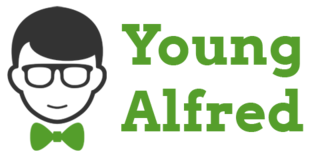 |
|
| Perks of working with a broker |
|
Disclaimer: All insurance-related services are offered through Young Alfred.
